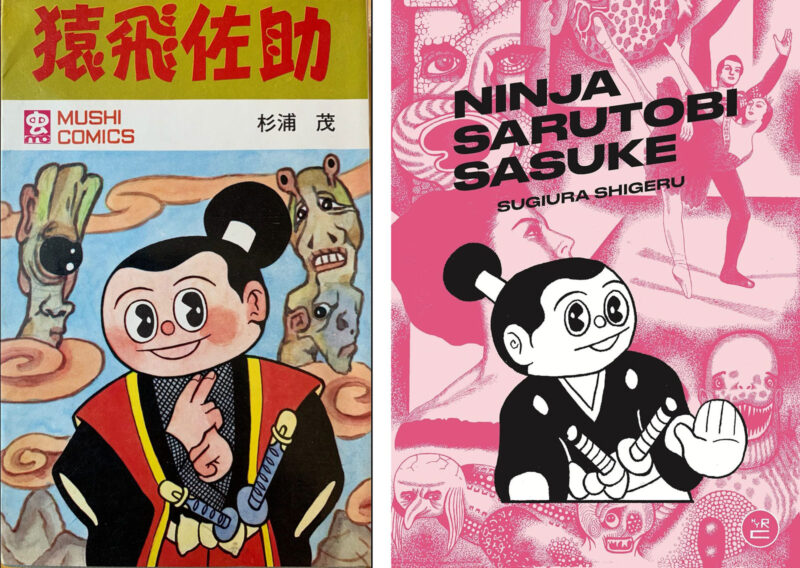
Sarutobi Sasuke is a character that emerged from the mists of ancient lore and historical inspiration to Kodan narrative storytelling and since adapted into every popular medium that followed — kamishibai, kabuki, manga, silent film, anime, TV, video games and on and on. Since the dawn of the 1900s he’s been everything from a cartoonish super-powered scamp to a rebellious teenage black magician, a noir-shadowed paranoid ninja with a blood-soaked bodycount to a samurai slaying kung-fu gorilla.

No adaptation has been quite as downright demented as Sugiura Shigeru‘s 1969 manga Ninja Sarutobi Sasuke, and thanks to Ryan Holmberg and New York Review Books we now have it in English!
Clocking in at around 250 pages, including a thorough essay by the translator, this new collection is as essential to any ninja bookshelf as it is to any pop art library. Shigeru was a genuine weirdo in the best sense of the word, and this is the first of his ninjutsu-related work to be seen in the West since the early days of the 1980s avant-garde RAW Magazine.

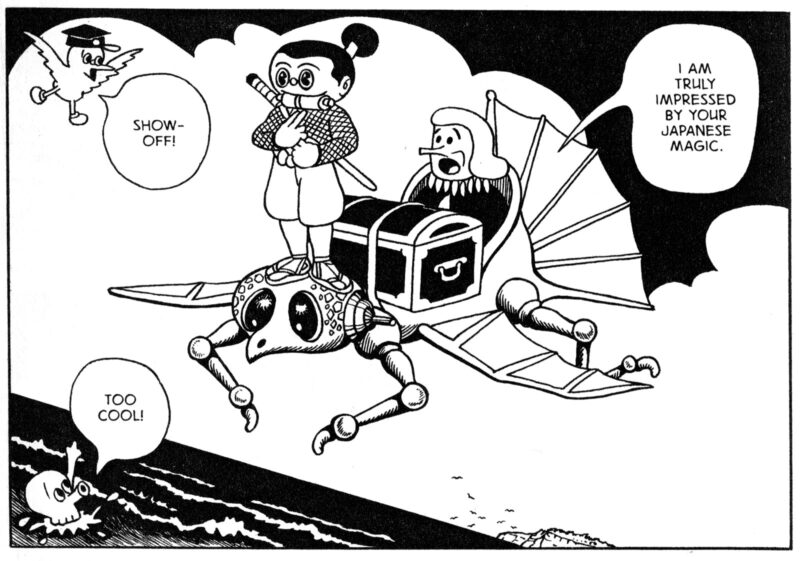

Now look, this isn’t Kamui or Path of the Assassin. Despite the titular character being THE ninja icon, and the presence of historical figures like Sanada Yukimura in the ‘narrative’, you’re not going to find black suits and hoods, bamboo-punk spy gadgets or brutal assassinations from the rafters of a castle here. What you do get is schizophrenic episodes where a goofy little jidai-geki manga is plagued by wormholes into other eras of history, far corners of the globe, and further-reaching realms of artistic exploration. Sasuke and his foes are randomly beset by anything from American cavalry of the Indian wars to shapeshifting outré alien creatures floating in the sky, interspersed with cameos from a host of famous historical and cinematic figures, sometimes accompanied by Sasuke’s narrated lessons.
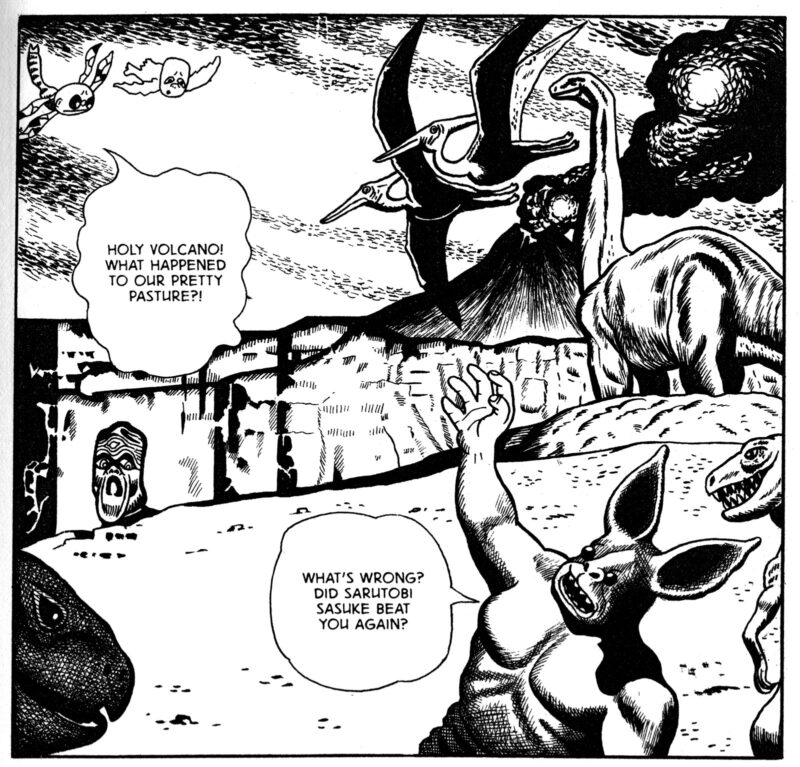
They were trying… TRYING… to be this demented with movies like HOUSE, but never achieved this level of effortless dadaism. Shigeru’s ability to change gears literally at the turn of a page is unnerving. Perfectly normal Sasuke antics on one page, and a turned leaf later the art style gets cross-pollinated with other aesthetics — as if he left his art board and came back to find it vandalized by the likes of Fletcher Hanks and Basil Wolverton. It’s like the acid kicked-in in a heartbeat and you go from Japan’s equivalent of Fleischer animal cartoons to Yellow Submarine directed by Salvador Dali or Fantastic Planet reworked by Jodorowsky. And then in a snap you’re back to the baseline normal art.
This guy is diddling your psyche at the drop of a basket hat, and your expectations as a reader are so quickly torn asunder by a multi-level meta onion-peeling of a fever dream, you can’t put it down, save for your own exhaustion from processing it all.
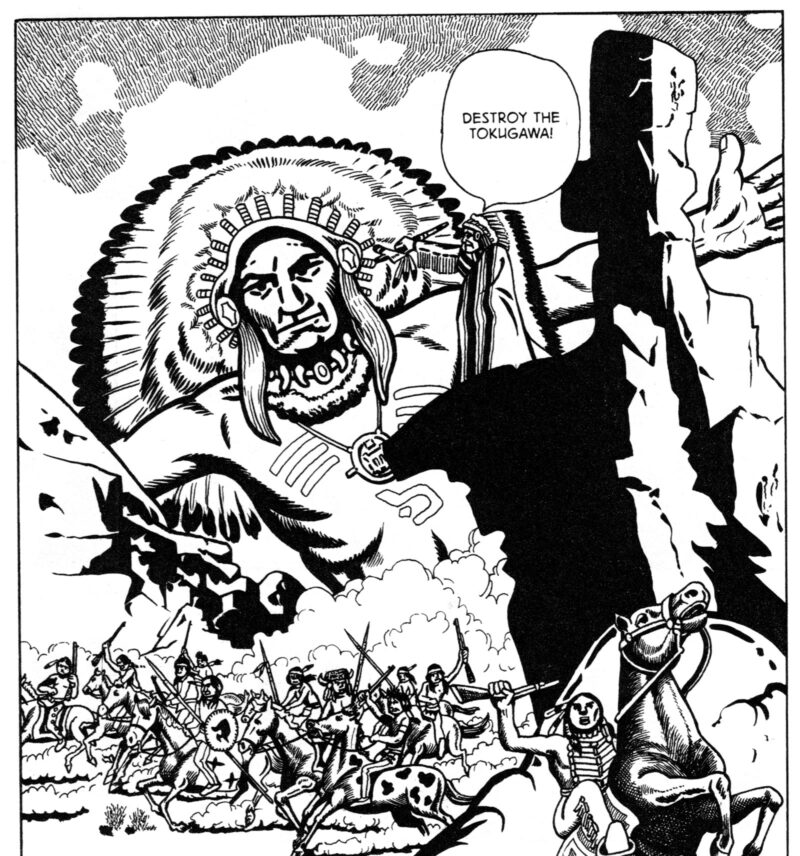
Ninja Sarutobi Sasuke is a case of a genius creator getting ahold of a cultural institution — a character tradition the likes of Mickey Mouse — and turning him completely on his head, f*cking with his publisher and the audience all at once. It’s also a significant chapter in the roller-coaster history of the single most prolific ninja / ninjutsu character of all time, and has as much right to be in your collection as Shinoda’s Samurai Spy.
That’s the flexibility of this genre, and this character…
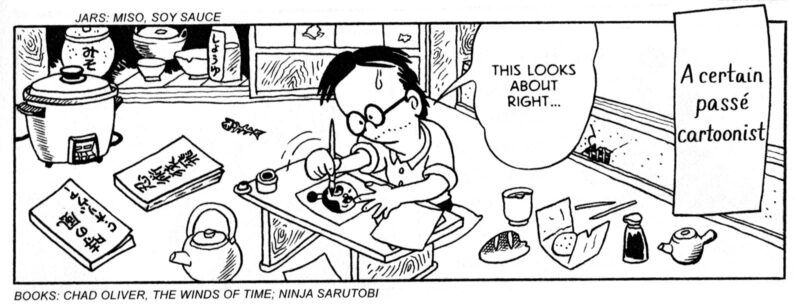
I highly recommend this passionate review from way more of an expert than me.
Get this book directly from the publisher here.
Keith J. Rainville — October, 2024
